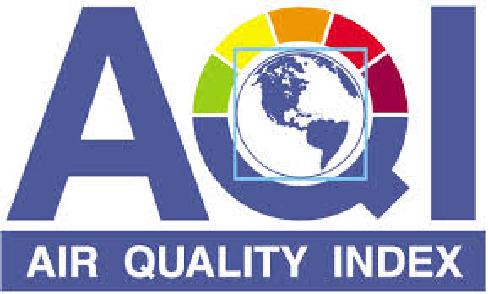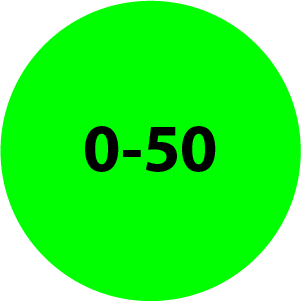

УЛААНБААТАР ХОТЫН АГААРЫН ЧАНАРЫН ХЯНАЛТ ШИНЖИЛГЭЭНИЙ ХОНОГИЙН МЭДЭЭ /2025.12.11/
2025/12/12

УЛААНБААТАР ХОТЫН АГААРЫН ЧАНАРЫН ХЯНАЛТ ШИНЖИЛГЭЭНИЙ ХОНОГИЙН МЭДЭЭ /2025.12.10/
2025/12/11

УЛААНБААТАР ХОТЫН АГААРЫН ЧАНАРЫН ХЯНАЛТ ШИНЖИЛГЭЭНИЙ ХОНОГИЙН МЭДЭЭ /2025.12.09/
2025/12/10

УЛААНБААТАР ХОТЫН АГААРЫН ЧАНАРЫН ХЯНАЛТ ШИНЖИЛГЭЭНИЙ ХОНОГИЙН МЭДЭЭ /2025.12.08/
2025/12/09

УЛААНБААТАР ХОТЫН АГААРЫН ЧАНАРЫН 7 ХОНОГИЙН МЭДЭЭ /2025.12.01-2025.12.07/
2025/12/09

УЛААНБААТАР ХОТЫН АГААРЫН ЧАНАРЫН ХЯНАЛТ ШИНЖИЛГЭЭНИЙ ХОНОГИЙН МЭДЭЭ /2025.12.04/
2025/12/05

УЛААНБААТАР ХОТЫН АГААРЫН ЧАНАРЫН ХЯНАЛТ ШИНЖИЛГЭЭНИЙ ХОНОГИЙН МЭДЭЭ /2025.12.03/
2025/12/04

УЛААНБААТАР ХОТЫН ХҮЙТНИЙ УЛИРЛЫН АГААРЫН ЧАНАРЫН ТӨЛӨВ БАЙДЛЫН ТОЙМ /2025 ОНЫ 11 ДҮГЭЭР САР/
2025/12/03

УЛААНБААТАР ХОТЫН АГААРЫН ЧАНАРЫН ХЯНАЛТ ШИНЖИЛГЭЭНИЙ ХОНОГИЙН МЭДЭЭ /2025.12.02/
2025/12/03

УЛААНБААТАР ХОТЫН АГААРЫН ЧАНАРЫН ХЯНАЛТ ШИНЖИЛГЭЭНИЙ ХОНОГИЙН МЭДЭЭ /2025.12.01/
2025/12/02

УЛААНБААТАР ХОТЫН АГААРЫН ЧАНАРЫН 7 ХОНОГИЙН МЭДЭЭ /2025.11.24-2025.11.30/
2025/12/01

УЛААНБААТАР ХОТЫН АГААРЫН ЧАНАРЫН ХЯНАЛТ ШИНЖИЛГЭЭНИЙ ХОНОГИЙН МЭДЭЭ /2025.11.30/
2025/12/01

УЛААНБААТАР ХОТЫН АГААРЫН ЧАНАРЫН ХЯНАЛТ ШИНЖИЛГЭЭНИЙ ХОНОГИЙН МЭДЭЭ /2025.11.27/
2025/11/28

УЛААНБААТАР ХОТЫН АГААРЫН ЧАНАРЫН ХЯНАЛТ ШИНЖИЛГЭЭНИЙ ХОНОГИЙН МЭДЭЭ /2025.11.26/
2025/11/27

УЛААНБААТАР ХОТЫН АГААРЫН ЧАНАРЫН ХЯНАЛТ ШИНЖИЛГЭЭНИЙ ХОНОГИЙН МЭДЭЭ /2025.11.24/
2025/11/25

УЛААНБААТАР ХОТЫН АГААРЫН ЧАНАРЫН 7 ХОНОГИЙН МЭДЭЭ /2025.11.17-2025.11.23/
2025/11/24

УЛААНБААТАР ХОТЫН АГААРЫН ЧАНАРЫН ХЯНАЛТ ШИНЖИЛГЭЭНИЙ ХОНОГИЙН МЭДЭЭ /2025.11.23/
2025/11/24

УЛААНБААТАР ХОТЫН АГААРЫН ЧАНАРЫН ХЯНАЛТ ШИНЖИЛГЭЭНИЙ ХОНОГИЙН МЭДЭЭ /2025.11.19/
2025/11/20

УЛААНБААТАР ХОТЫН АГААРЫН ЧАНАРЫН ХЯНАЛТ ШИНЖИЛГЭЭНИЙ ХОНОГИЙН МЭДЭЭ /2025.11.18/
2025/11/19

УЛААНБААТАР ХОТЫН АГААРЫН ЧАНАРЫН ХЯНАЛТ ШИНЖИЛГЭЭНИЙ ХОНОГИЙН МЭДЭЭ /2025.11.17/
2025/11/18

2014/10/01

“Биодизелийн түлш” техникийн шаардлага монгол улсын стандарт
2014/10/23

2014/12/05

2014/12/05

Автотээврийн хэрэгсэл – техникийн үзлэг буюу шалгалтаар хорт хийг хэмжих арга
2014/12/10

Инфографик: Шингэрүүлсэн хий, хийн тоног төхөөрөмжийн импорт
2014/12/05

Агаарын бохирдол хүний эрүүл мэндэд хэрхэн нөлөөлж байгааг статистик судалжээ
2014/10/01

Агаар бохирдуулагч бодисын шинж чанар, тэдгээрийг тодорхойлох аргын үндэс
2014/09/17

Инфографик: Агаарын бохирдлоос шалтгаалсан өвчлөл
2014/12/05

АГААРЫН БОХИРДЛЫН ОЛОН УЛСЫН ХУРЛААС ГАРСАН ЗӨВЛӨМЖ
2017/01/16

Шингэрүүлсэн нүүрсустөрөгчийн хий. Автотээврийн түлш. Техникийн шаардлага
2014/10/23

Улаанбаатар хотын агаарын чанарын 7 хоногийн мэдээ /2015.04.20-2015.04.26/
2015/04/28

Улаанбаатар хотын агаарын чанарын 7 хоногийн мэдээ /2015.05.11-2015.05.17/
2015/05/18

Улаанбаатар хотын агаарын чанарын 7 хоногийн мэдээ /2015.04.27-2015.05.03/
2015/05/18

Улаанбаатар хотын агаарын чанарын 7 хоногийн мэдээ /2015.04.06-2015.04.12/
2015/04/15

УЛААНБААТАРЫН АГААРЫН БОХИРДОЛД ЦАГ АГААРЫН НӨХЦӨЛ ХЭРХЭН НӨЛӨӨЛДӨГ ВЭ?
2019/05/25

АГААРЫН БОХИРДЛЫН ОЛОН УЛСЫН ХУРЛААС ГАРСАН ЗӨВЛӨМЖ
2017/01/16

Улаанбаатар хотын хүйтний улирлын агаарын чанарын мэдээ /2015 оны 10-12-р сард
2016/01/12

Улаанбаатар хотын агаарын чанарын 7 хоногийн мэдээ /2015.04.20-2015.04.26/
2015/04/28

Улаанбаатар хотын агаарын чанарын 7 хоногийн мэдээ /2015.04.06-2015.04.12/
2015/04/15
Particles of any substances that are less than 10 or 2.5 micrometres diameter. Particles in this size range make up a large proportion of dust that can be drawn deep into the lungs. Larger particles tend to be trapped in the nose, mouth or throat. Particles in the PM10 size range are commonly present in air and may be drawn into the body with every breath. In the lungs particles can have a direct physical effect and/or be absorbed into the blood. Airborne particles, not only the PM10 fraction, may also may be deposited in the mouth, throat or nose and be ingested.
Carbon monoxide is a highly poisonous, colourless, odourless and tasteless gas. It is very flammable and mixes well with air, easily forming explosive mixtures. Inhalation of low levels of carbon monoxide (200 parts per million for 2-3 hours) can cause headache, dizziness, light-headedness and fatigue. Exposure to higher concentrations (400 parts per million) of carbon monoxide can cause sleepiness, hallucinations, convulsions, collapse, loss of consciousness and death. It can also cause personality and memory changes, mental confusion and loss of vision. Extremely high exposures to carbon monoxide can cause the formation of carboxyhaemoglobin and decrease the body's ability to carry oxygen. This can cause a bright red colour to the skin and mucous membranes causing trouble breathing, collapse, convulsions, coma and death. Long term (chronic) health effects can occur from exposure to low levels of carbon monoxide. These effects may produce heart disease and damage to the nervous system. Exposure of pregnant women to carbon monoxide may result in low birth weights and other defects in the offspring.
Sulfur dioxide is a gas. It is invisible and has a nasty, sharp smell. It reacts easily with other substances to form harmful compounds, such as sulfuric acid, sulfurous acid and sulfate particles. About 99% of the sulfur dioxide in air comes from human sources. The main source of sulfur dioxide in the air is industrial activity that processes materials that contain sulfur, eg the generation of electricity from coal, oil or gas that contains sulfur. Some mineral ores also contain sulfur, and sulfur dioxide is released when they are processed. In addition, industrial activities that burn fossil fuels containing sulfur can be important sources of sulfur dioxide. Sulfur dioxide is also present in motor vehicle emissions, as the result of fuel combustion. In the past, motor vehicle exhaust was an important, but not the main, source of sulfur dioxide in air. However, this is no longer the case. Sulfur dioxide affects human health when it is breathed in. It irritates the nose, throat, and airways to cause coughing, wheezing, shortness of breath, or a tight feeling around the chest. The effects of sulfur dioxide are felt very quickly and most people would feel the worst symptoms in 10 or 15 minutes after breathing it in. Those most at risk of developing problems if they are exposed to sulfur dioxide are people with asthma or similar conditions.
Oxides of nitrogen are a mixture of gases that are composed of nitrogen and oxygen. Two of the most toxicologically significant compounds are nitric oxide (NO) and nitrogen dioxide (NO2). Low levels of oxides of nitrogen can irritate eyes, nose, throat and lungs, possibly leading to coughing, shortness of breath, tiredness and nausea. Exposure can also result in a build up of fluid in the lungs for 1-2 days after exposure. Breathing high levels of oxides of nitrogen can cause rapid burning, spasms and swelling of tissues in the throat and upper respiratory tract, reduced oxygenation of tissues, a build up of fluid in the lungs, and maybe even death.
Ozone is found in two regions of the Earth's atmosphere – at ground level and in the upper regions of the atmosphere. Both types of ozone have the same chemical composition (O3). While upper atmospheric ozone protects the earth from the sun's harmful rays, ground level ozone is the main component of smog. Ozone in the air we breathe can harm our health—typically on hot, sunny days when ozone can reach unhealthy levels. Even relatively low levels of ozone can cause health effects. People with lung disease, children, older adults, and people who are active outdoors may be particularly sensitive to ozone.

No negative health implications.
Зөвлөгөө
Зөвлөгөө
Хэт мэдрэг хүмүүс эрүүл мэнддээ анхаарал тавих нь зүйтэй

Зөвлөгөө
Зөвлөгөө
Хэт мэдрэг хүмүүс эрүүл мэнддээ анхаарал тавих нь зүйтэй

Health condition of unusually sensitive people will be negatively affected. People with chronic heart or respiratory diseases, especially people with bronchial asthma will be more affected.
Зөвлөгөө
Зөвлөгөө
Зүрх судас, уушгины архаг өвчтэй хүмүүс, хүүхдүүд, өндөр настангууд гадаа биеийн хүчний хүнд ажил хийх, тоглох хугацаагаа багасгах, нүүрстөрөгчийн дутуу исэл их хэмжээгээр гаргадаг эх үүсвэр (тухайлбал автозам)-ээс хол байх хэрэгтэй.

Small negative effect for general population health. Health condition of unusually sensitive people will be severally affected.
Зөвлөгөө
Зөвлөгөө
Зүрх, уушгины архаг өвчтэй болон өндөр настай хүмүүс, хүүхдүүд гадаа удаан хугацаагаар байх болон гадаа биеийн хүчний хүнд ажил хийхээс зайлсхийх, архаг хууч өвчтэй хүмүүс даралтаа тогтмол хянах, эмийг хугацаанд нь уух шаардлагатай. Мөн цэвэр агаарт салхинд гарах болон амны хаалт зүүх хэрэгтэй.

Visible negative effect for general population's health.
Зөвлөгөө
Зөвлөгөө
Зүрх, уушгины архаг өвчтэй болон өндөр настай хүмүүс, хүүхдүүд гадаа биеийн хүчний ямар ч төрлийн ажил хийхээс зайлсхийх, архаг хууч өвчтэй хүмүүс даралтаа тогтмол хянах, эмчийн хяналтад байх, эмийг хугацаанд нь уух шаардлагатай. Мөн цэвэр агаарт салхинд гарах болон амны хаалт зүүх хэрэгтэй.

Hazardous for general population health.
Зөвлөгөө
Зөвлөгөө
Хүн бүр гадаа биеийн хүч шаардсан ямар ч төрлийн ажил хийхээс зайлсхийх гэртээ байх хэрэгтэй. Цэвэр агаарт салхинд гарах хэрэгтэй. Архаг хууч өвчтэй хүмүүс даралтаа тогтмол хянах, эмчийн хяналтад байж эмийг хугацаанд нь уух шаардлагатай. Нүүрстөрөгчийн дутуу исэл их хэмжээгээр гаргадаг эх үүсвэр (тухайлбал автозам)-ээс хол байх хэрэгтэй. Мөн амны хаалт зүүх.
Condition
Updated
Temperature
Wind

The Ministry of Environment and Tourism of Mongolia
Address: Government Building 2, United Nations Street 5/2, Chingeltei District, 15160 Ulaanbaatar
Phone: (+976-51) 261966
Email: info@mne.gov.mn
Website : www.mne.mn
Today: 221
This month: 0
Total: 407336
